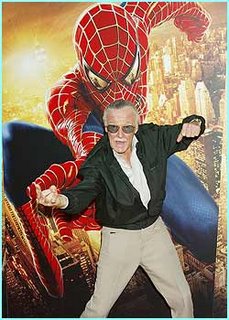Live Music: Menlo Park, Bede's Church, January 27 of 2007
A friend of mine and I turned up at a Master Sinfonia concert this Saturday. Like most local classical groups, they remain well below the radar of any sort of publicity or media attention unless you happen to listen to the excruciating KDFC ("Your place on the FM dial for oboe concerto after fucking oboe concerto!") or read the bizarrely joyless San Francisco Classical Voice. I happen to know one of the Master Sinfonia trombonists and -- my interest whetted by a promise of the Stravinsky Danses Concertantes -- I graciously deigned to accept a comp ticket from him.

The show was at St. Bede's in Menlo Park, which is an institution of the Episcopal persuasion and seemed very charming and innocuous. There were posters for the midly blasphemous weekly movie night by the church door (Life of Brian, Dogma, etc.) as well as a promise of a coming anniversary celebration for the church which will feature, essentially, a church renaissance faire. "Aim for the period of Chaucer" was the advice at the bottom, regarding appropriate attire. Will do, Bede's.
The interior of the place is generally %95 wooden, with big solid rafters and a general Anglo-Saxon weightiness that makes you think of Heorot in Beowulf. The orchestra was enclosed in a sort of sheep-pen on a dais in the center (the chapel is 'in the round') surrounded by stiff wooden pews well-freighted with old people and a modest smattering of people whose hair retained some color.
The Master Sinfonia itself seems to be a good little orchestra. It's quite small, as these things go, arguably a 'chamber orchestra' (just two basses, for example) but this seems to have allowed them a certain amount of selectivity in terms of players.
The conductor David Ramadanoff, unfortunately, came off as a terrible blowhard and couched the whole concert in terms of an old-fashioned music history lesson. Before every piece he delivered a potted history of the composer and his milieu, all of it very tame and firmly rooted in the 'great man' theory of music history, whereby certain composers are revered as gods and a few are fortunate enough to be given an occasioanl nod as demigods.
I am, needless to say, disgusted by this practice of prefacing music with lectures. The motive, it seems, is to explain to the audience why the piece they are about to hear is not actually boring or tame or badly-played but rather is important historically and therefore good for them, like dutifully-consumed medicine or flaxseed bread.
(As a side note, it is extremely irritating to the woodwind players, whose reeds are drying out and horns cooling while the guy on the podium outlines the major plot-points in the thrilling tale of Haydn in London.)
Saturday night had a good program, in theory: a J. C. Bach sinfonia, the aforementioned Stravinsky Danses Concertantes, and the extremely good Symphony No. 100 by Haydn. So, major points for program planning, which is usually incoherent even in professional orchestras.
Unfortunately, the J. C. Bach was a snore, played very straight and without spicy continuo or similar flourishes. Technically, everything was there for a good performace -- contrasting dynamics, a nice blended sonority, fine oboe playing, passable first violin athleticism -- but the whole affair was unexciting and riskless, with no effort made to pick out little details or otherwise breathe life into what can very easily be boring music.
The Stravinsky more than compensated, luckily. This was first-rate playing, with the added excitement of coming from a group just barely far enough to the 'amateur' end of the spectrum not to sound overly technical or bored. Ramadanoff's meticulous style -- which arguably made sitting through the Bach such a chore -- is perfectly suited to the rhythmic complexity and split-second texture changes of Stravinsky. In an ideal world, Master Sinfonia would dispense with old music and dedicate itself to the 20th century, where the fresher air and colder harmony is a source of invigoration. I'd be remiss not to mention the principal bass player, whose heroics counterbalanced the whole string section and almost single-handed kept the agular cardiovascular thump of the quick movements in motion.
And then... Haydn. It was an okay rendition of a great piece, tolerable but not good enough to prevent me from leaving during the intermission if I'd had a crystal ball. The percussion section did a nice job, particularly the aggressive timpani and a light touch with the cymbals, but they conspicuously lacked ruthe for the bass drum part. (If you're going to go for Turkish percussion effects, you may as well really dive in.) Also, the woodwinds -- so good in the Stravinsky -- didn't seem to have room to breathe or shimmer in the first movement, with the result that the chipper little fife tunes sounded muddy and uninspiring. Of course, no piece could live up to the pre-performance eulogy this one received.

The show was at St. Bede's in Menlo Park, which is an institution of the Episcopal persuasion and seemed very charming and innocuous. There were posters for the midly blasphemous weekly movie night by the church door (Life of Brian, Dogma, etc.) as well as a promise of a coming anniversary celebration for the church which will feature, essentially, a church renaissance faire. "Aim for the period of Chaucer" was the advice at the bottom, regarding appropriate attire. Will do, Bede's.
The interior of the place is generally %95 wooden, with big solid rafters and a general Anglo-Saxon weightiness that makes you think of Heorot in Beowulf. The orchestra was enclosed in a sort of sheep-pen on a dais in the center (the chapel is 'in the round') surrounded by stiff wooden pews well-freighted with old people and a modest smattering of people whose hair retained some color.
The Master Sinfonia itself seems to be a good little orchestra. It's quite small, as these things go, arguably a 'chamber orchestra' (just two basses, for example) but this seems to have allowed them a certain amount of selectivity in terms of players.
The conductor David Ramadanoff, unfortunately, came off as a terrible blowhard and couched the whole concert in terms of an old-fashioned music history lesson. Before every piece he delivered a potted history of the composer and his milieu, all of it very tame and firmly rooted in the 'great man' theory of music history, whereby certain composers are revered as gods and a few are fortunate enough to be given an occasioanl nod as demigods.
I am, needless to say, disgusted by this practice of prefacing music with lectures. The motive, it seems, is to explain to the audience why the piece they are about to hear is not actually boring or tame or badly-played but rather is important historically and therefore good for them, like dutifully-consumed medicine or flaxseed bread.
(As a side note, it is extremely irritating to the woodwind players, whose reeds are drying out and horns cooling while the guy on the podium outlines the major plot-points in the thrilling tale of Haydn in London.)
Saturday night had a good program, in theory: a J. C. Bach sinfonia, the aforementioned Stravinsky Danses Concertantes, and the extremely good Symphony No. 100 by Haydn. So, major points for program planning, which is usually incoherent even in professional orchestras.
Unfortunately, the J. C. Bach was a snore, played very straight and without spicy continuo or similar flourishes. Technically, everything was there for a good performace -- contrasting dynamics, a nice blended sonority, fine oboe playing, passable first violin athleticism -- but the whole affair was unexciting and riskless, with no effort made to pick out little details or otherwise breathe life into what can very easily be boring music.
The Stravinsky more than compensated, luckily. This was first-rate playing, with the added excitement of coming from a group just barely far enough to the 'amateur' end of the spectrum not to sound overly technical or bored. Ramadanoff's meticulous style -- which arguably made sitting through the Bach such a chore -- is perfectly suited to the rhythmic complexity and split-second texture changes of Stravinsky. In an ideal world, Master Sinfonia would dispense with old music and dedicate itself to the 20th century, where the fresher air and colder harmony is a source of invigoration. I'd be remiss not to mention the principal bass player, whose heroics counterbalanced the whole string section and almost single-handed kept the agular cardiovascular thump of the quick movements in motion.
And then... Haydn. It was an okay rendition of a great piece, tolerable but not good enough to prevent me from leaving during the intermission if I'd had a crystal ball. The percussion section did a nice job, particularly the aggressive timpani and a light touch with the cymbals, but they conspicuously lacked ruthe for the bass drum part. (If you're going to go for Turkish percussion effects, you may as well really dive in.) Also, the woodwinds -- so good in the Stravinsky -- didn't seem to have room to breathe or shimmer in the first movement, with the result that the chipper little fife tunes sounded muddy and uninspiring. Of course, no piece could live up to the pre-performance eulogy this one received.


